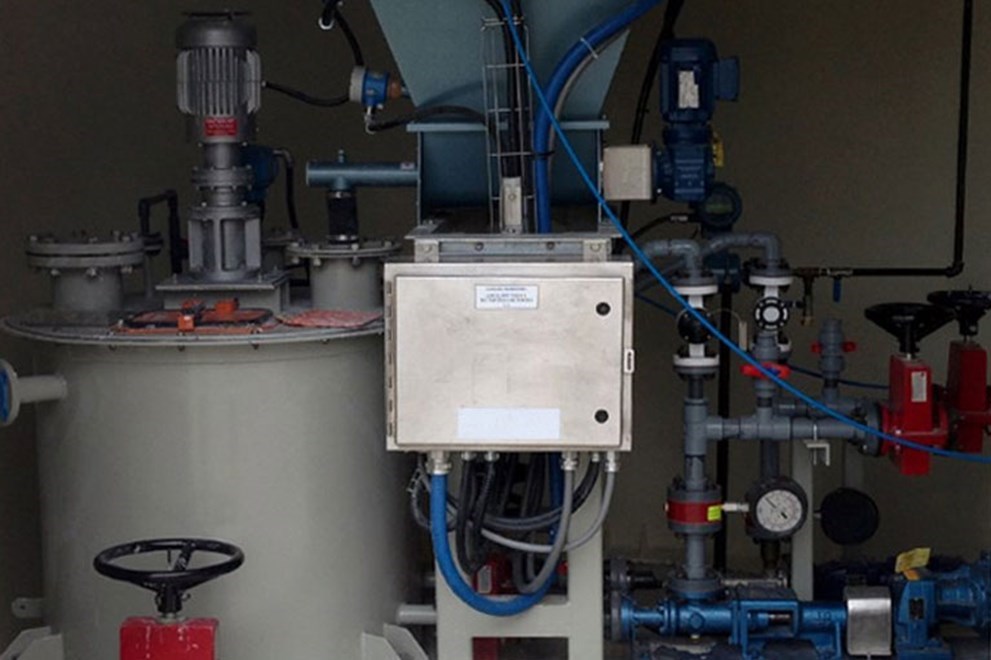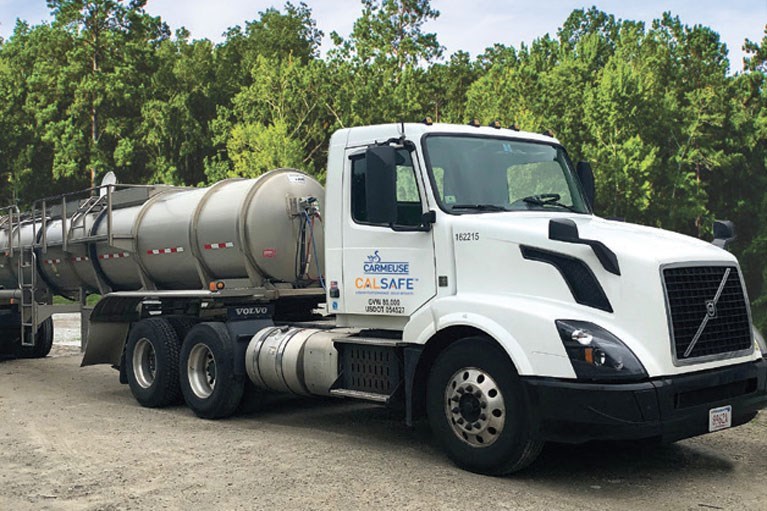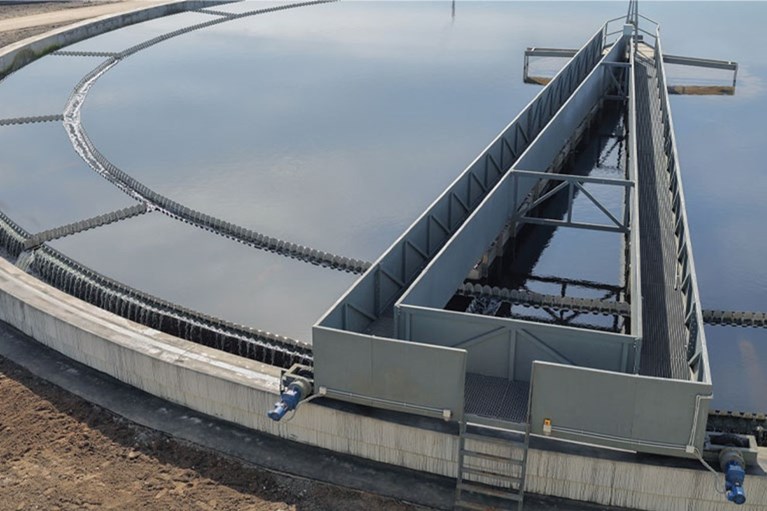
What is a Batch Type Slaker?
The name batch slaker is derived from the carefully metered quantities of lime slurry made by these relatively simplistic systems one distinct batch at a time, rather than the continuous lime slurry production found in higher throughput slaking systems. Batch type slakers – also commonly referred to as mixtanks – are best suited to applications in which the slurry production rate is relatively low and where there is few (if any) changes to the quicklime quality or water source. Due to its modest design, a batch slaker is incapable of quickly adapting to changes in quicklime quality, water temperatures/chemistry or other changes to the slurry production process. At the same time, this simplicity also means that mixtanks are the least expensive type of slaking system you can install (by a significant margin). However, this reduction in cost comes at the expense of adaptability, chemical usage efficiency, and the production of a less reactive lime slurry.
System Components and Capabilities
The setup of a batch slaker is relatively simplistic when compared to other slaking system types. Generally, these slaking systems have few components and consist of an agitated mixing tank that combines the essential ingredients together to create a lime slurry. Here, water and lime are carefully measured (either by weight or by volume) and fed into the tank. Once inside the tank, the solution is agitated for a preset amount of time based on the weight/volume of the inputs to ensure there is enough time to slake as much of the lime as possible given the limitations of the system. After the correct slaking temperature is reached and sustained for a predetermined amount of time, the slurry is fed into a storage tank for later use in the downstream process.
Mixtank slakers are available in a wide range of slaking capacities. However, for the most part, they are only a practical option up to 500 kg/h. After this point, the amount of operator attention needed, as well as their less than optimal lime usage, usually means that another type of slaker is a more sensible solution. In terms of water to lime ratios, batch slakers operate between a 3.5:1 and 6:1 ratio. The water to lime ratio in these slakers is controlled by carefully monitoring both the water and lime feeds into the mixing tank.
Optimization and Reactivity
While the slaking temperature is monitored in a batch slaker, cannot necessarily controlled in an effective manner. Even with careful feed and flow regulation, the batch slaking process means that the temperature does not reach a steady state or consistency, as is the case with other slaking system setups. When combined with a mixing process that does not necessarily produce a homogenous mixture, this type of slaker is very difficult to optimize for maximum reactivity. However, since lime slurry quality is not a primary focus in mixtank slaking applications, they are frequently operated without preheating the incoming water supply, which does further reduce operating costs for the user.
At the end of the day, the simplistic operation of a batch slaker comes at the expense of chemical consumption relative to the slaker’s slurry output/reactivity. This means that the slurry concentration can effectively be set anywhere below the point where the slurry transitions from a “milk of lime” to a “paste” (between 25-35% for most lime/water combinations).
Applications
Batch type slakers are best suited for low usage applications that do not require a high quality lime slurry or where a downstream process requires a continuous flow of lime slurry. What’s more, they are best suited to instances with a consistent source of both quicklime and water. This means that they are often used in applications where a relatively consistent and small amount of hydrated lime slurry is required each day and where cost/supply prevents the use of hydrate or premade lime slurry solutions. Ultimately, for these types of applications, a batch slaker is the most economical and practical solution available in the market today.
Related Blogs

January 24, 2024
Lime Slurry Handling: A Good Practice Guide
This is a good practice guide for safe and efficient delivery, offloading and storage of lime slurry. Ready-to-use lime slurry can help eliminating the challenges posed by handling dry lime products.

January 09, 2024
Quicklime, Hydrate or Slurry?
When it comes to deciding on a lime product to treat your water and wastewater, you have three basic choices: quicklime, hydrated lime, and lime slurry. How do you decide what lime is the right lime for you?
